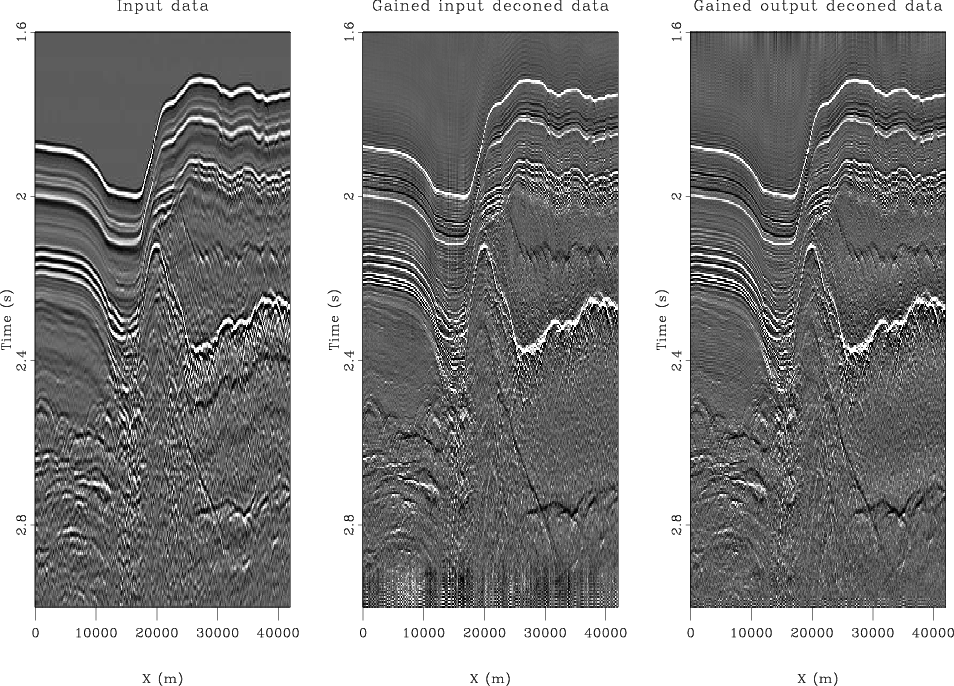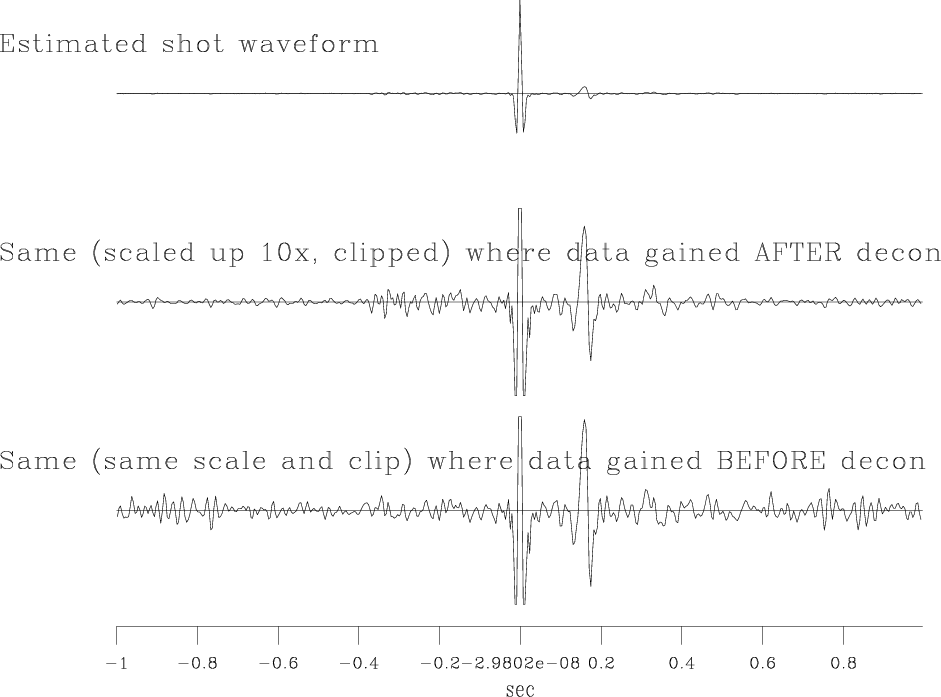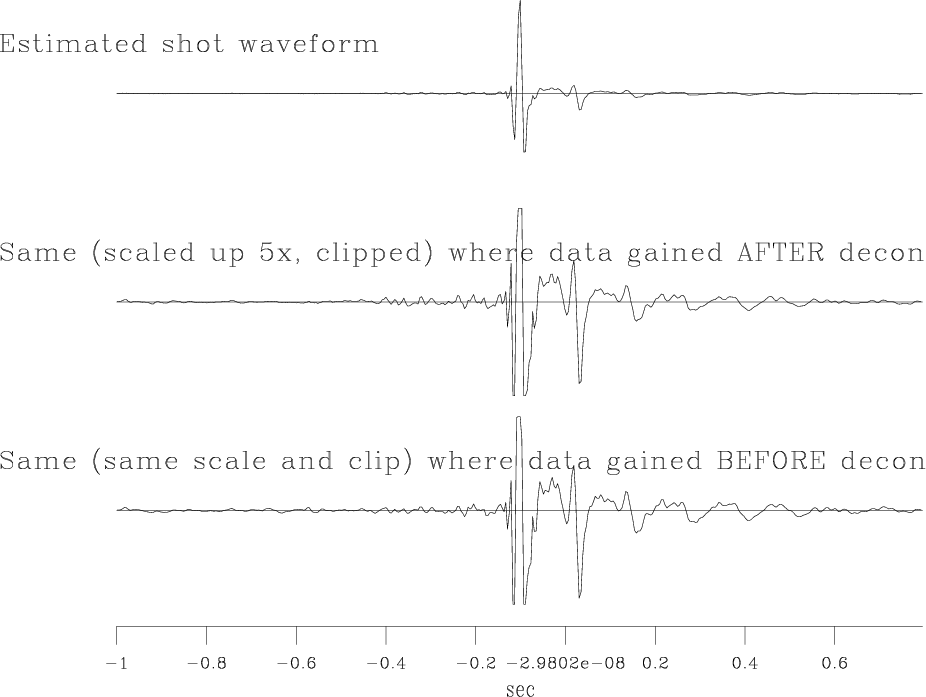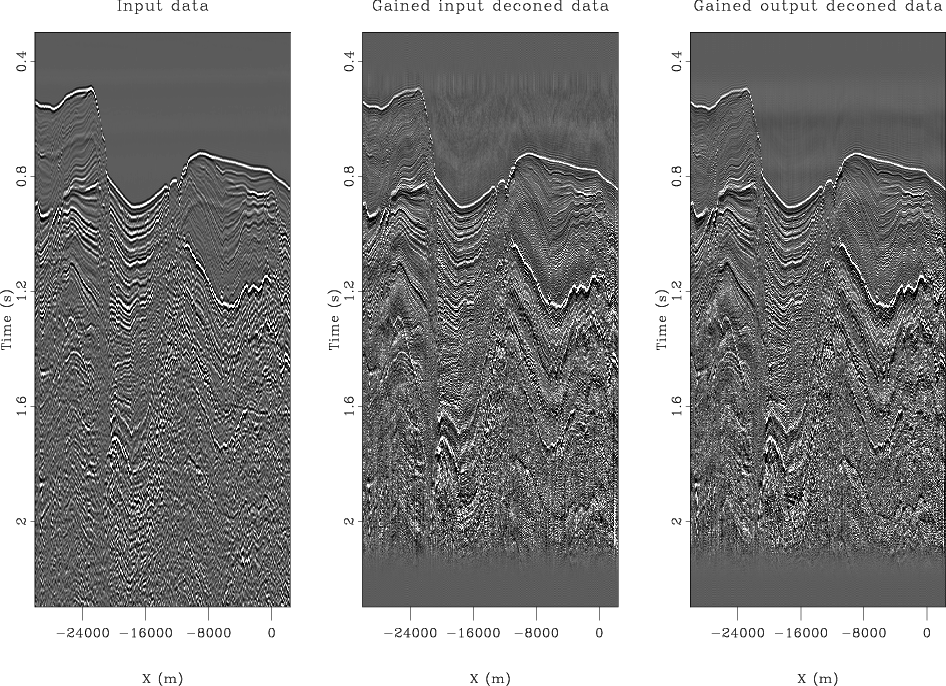|
|
|
|
Decon in the log domain with variable gain |

|
|---|
|
Comp-gom-50
Figure 1. Gulf of Mexico. Decon produces plain white reflections from hard boundaries, and plain black boundaries from soft ones. WB= Water Bottom (white), TS= Top Salt (white), BS= Bottom Salt (black), ME= Mystery Event (black), soft reflector could be rugose salt solution of a former salt layer. |
|
|

|
|---|
|
trio
Figure 2. Wavelet from Cabo data. Although causality is not imposed, the estimated shot waveform is near causal (discounting the leading lobe of the Ricker wavelet). The importance of gain (here  ) after deconvolution instead of before is shown by the lower two traces.
There is much less noise when we gain AFTER decon, not BEFORE.
Notice also that gain before decon estimates a slightly larger bubble (which is wrong).
) after deconvolution instead of before is shown by the lower two traces.
There is much less noise when we gain AFTER decon, not BEFORE.
Notice also that gain before decon estimates a slightly larger bubble (which is wrong).
|
|
|

|
|---|
|
trio2
Figure 3. The Gulf of Mexico data produces a very different bubble but the same conclusions as Figure 2. The lack of symmetry in the Ricker wavelet may be related to the unresolved uniqueness issue. (Awaits better regularization.) |
|
|

|
|---|
|
Comp-cabo-50
Figure 4. Cabo data. One filter on all traces. Bubble (at about 0.9s) removed. Enhanced high frequency at 1.1s. Gained-input method gave low frequency event precursors especially clear above the event at 1.2s but also visible above the water bottom. The problem is overcome by the gained-output method. (Guitton) |
|
|
|
|
|
|
Decon in the log domain with variable gain |